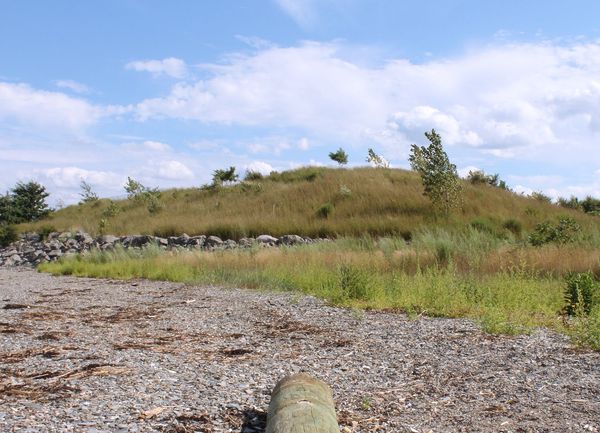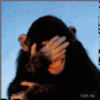Taking pictures of shooting stars/night photography
Aug 11, 2013 15:26:05 #
I have a Cannon Rebel T4i. I will be attempting to take some pics of the shooting star phenomenon that is to take place tonight and tomorrow night. I'm fairly new to this and have never taken pics at night.
Can anyone give me some advice on what settings I should be working with. Should I use auto or manual?
If manual what settings do suggest I start with.
Any advice will be greatly appreciated. I do have a tri-pod. Thanks Bri
Can anyone give me some advice on what settings I should be working with. Should I use auto or manual?
If manual what settings do suggest I start with.
Any advice will be greatly appreciated. I do have a tri-pod. Thanks Bri



Aug 11, 2013 15:31:11 #
You're probably going to be using manual settings.
ISO of 100-125 or higher
Apeture of 5.6 to 7.1
Shutter on Bulb
Expose at infinity for 15 to 30 second
View results for under or over exposure
Repeat changing exposure and viewing
Repeat best again and again and view your shots.
Sarge69
ISO of 100-125 or higher
Apeture of 5.6 to 7.1
Shutter on Bulb
Expose at infinity for 15 to 30 second
View results for under or over exposure
Repeat changing exposure and viewing
Repeat best again and again and view your shots.
Sarge69
Aug 11, 2013 16:26:26 #
sarge69 wrote:
You're probably going to be using manual settings.
ISO of 100-125 or higher
Apeture of 5.6 to 7.1
Shutter on Bulb
Expose at infinity for 15 to 30 second
View results for under or over exposure
Repeat changing exposure and viewing
Repeat best again and again and view your shots.
Sarge69
ISO of 100-125 or higher
Apeture of 5.6 to 7.1
Shutter on Bulb
Expose at infinity for 15 to 30 second
View results for under or over exposure
Repeat changing exposure and viewing
Repeat best again and again and view your shots.
Sarge69
Other advise I have seen suggests ISO of 3200 and minimum f-stop.
Manually focus on infinity.
And manual exposure so you can use the above.
Longer time gives you more possibility to catch a meteor although above 30 s will begin to streak the stars.
Aug 12, 2013 07:39:49 #
Capture something in the foreground. Tree, lighthouse etc. Good luck and capture some good memories.
Aug 12, 2013 08:20:23 #
menardre
Loc: Westport, MA
I have a Nikon D5100, and I am doing the same Perseid meteor shower photography. I did some sample shots last night (Sunday) and actually did capture some meteors.
I used my 18-55 set at 18mm. I have a remote hookup of my D5100 to my laptop so I can control all of the settings, and view the pictures as they are taken. This helps mostly in focusing since it is hard to get good focus on a star (try the moon first).
I use F4, 20 second exposure, 1600 ISO. with 2 seconds between pictures. I took 200 pictures. Going any longer than 20 seconds will result in elongated stars. I also tried other ISO settings to minimize 'sky glow'. As others have noted, you probably want to try 800, 1600, and 3200 and see which works best for your 'seeing'. I am going to try and make a time lapse series out of the 200 shots and see if the meteor 'pops' out. I also agree that keeping some (tress) slightly in the field of view adds some perspective. Hope this helps.
Roger
I used my 18-55 set at 18mm. I have a remote hookup of my D5100 to my laptop so I can control all of the settings, and view the pictures as they are taken. This helps mostly in focusing since it is hard to get good focus on a star (try the moon first).
I use F4, 20 second exposure, 1600 ISO. with 2 seconds between pictures. I took 200 pictures. Going any longer than 20 seconds will result in elongated stars. I also tried other ISO settings to minimize 'sky glow'. As others have noted, you probably want to try 800, 1600, and 3200 and see which works best for your 'seeing'. I am going to try and make a time lapse series out of the 200 shots and see if the meteor 'pops' out. I also agree that keeping some (tress) slightly in the field of view adds some perspective. Hope this helps.
Roger
Aug 12, 2013 08:29:01 #
menardre
Loc: Westport, MA
I forgot one other item- use a rubber band to 'lock' both the focus ring and the 'zoom' so they do not move. Since you will be pointing 'up' all night, the rings may have a tendency to move slightly.
Roger
Roger
Aug 12, 2013 08:35:26 #
Hi nice info on shooting the stars i will try it tonight, but can you explane how you did the the remote to your computer and etc I would like to try it out if I have the equipent.Thanks.
Aug 12, 2013 09:08:01 #
ringo454 wrote:
I have a Cannon Rebel T4i. I will be attempting to take some pics of the shooting star phenomenon that is to take place tonight and tomorrow night. I'm fairly new to this and have never taken pics at night.
Can anyone give me some advice on what settings I should be working with. Should I use auto or manual?
If manual what settings do suggest I start with.
Any advice will be greatly appreciated. I do have a tri-pod. Thanks Bri
Can anyone give me some advice on what settings I should be working with. Should I use auto or manual?
If manual what settings do suggest I start with.
Any advice will be greatly appreciated. I do have a tri-pod. Thanks Bri
Read this attached ebook.....will answer most of your questions
Aug 12, 2013 09:40:13 #
menardre
Loc: Westport, MA
Lenny
I am just getting started in astrophotography. I have cables that attach my D5100 to my laptop (Shoestring Astronomy cable). I use a program called 'ImagesPlus Camera Control'. This allows me to have my laptop take control of the D5100. It will make all of the F-stop, speed, ISO, interval, number of pictures, etc and then store all of the pictures on the laptop. It will show each picture after it has been taken - this helps since you get to see what is being taken. It also has features for LiveView, and to assist in focusing. There are several other camera control programs out there, I believe that Canons actually come with some form of camera control. This morning I scanned through the 200 pictures I took last night and found 2 meteor trails. I then used 'Photolapse' (freeware) to generate a short movie by timelapsing about 20 of the pictures. I will try again tonight- but weather forecast is for clouds.
Roger
I am just getting started in astrophotography. I have cables that attach my D5100 to my laptop (Shoestring Astronomy cable). I use a program called 'ImagesPlus Camera Control'. This allows me to have my laptop take control of the D5100. It will make all of the F-stop, speed, ISO, interval, number of pictures, etc and then store all of the pictures on the laptop. It will show each picture after it has been taken - this helps since you get to see what is being taken. It also has features for LiveView, and to assist in focusing. There are several other camera control programs out there, I believe that Canons actually come with some form of camera control. This morning I scanned through the 200 pictures I took last night and found 2 meteor trails. I then used 'Photolapse' (freeware) to generate a short movie by timelapsing about 20 of the pictures. I will try again tonight- but weather forecast is for clouds.
Roger
Aug 12, 2013 09:41:04 #
Thanks for your response. I tried last night to attempt some photos but didn't have much luck...NO SHOOTING STARS!.
Anyway, I may try again tonight. Thanks Bri
Anyway, I may try again tonight. Thanks Bri
Aug 12, 2013 15:31:49 #
Pentony
Loc: Earth Traveller
menardre wrote:
I have a Nikon D5100, and I am doing the same Pers... (show quote)
What type of remote hookup are you using between camera and laptop? Can you show a picture?
Just read info on 'ImagesPlus Camera Control.' Thanks :wink:
Aug 12, 2013 15:35:12 #
Pentony
Loc: Earth Traveller
nikonshooter wrote:
Read this attached ebook.....will answer most of your questions
Thanks for the download. Very interesting.
Aug 12, 2013 21:57:06 #
I took my first attempted shots of a long exposure and posted it yesterday...maybe it was technically this morning...and haven't seen it (and nobody has responded yet). It didn't turn out well, but I guess for my first try I shouldn't expect much. Lots of noise (10 min, 22 sec exposure, ISO 100) May I post here to get c/c?
Aug 13, 2013 00:13:48 #
planepics wrote:
I took my first attempted shots of a long exposure and posted it yesterday...maybe it was technically this morning...and haven't seen it (and nobody has responded yet). It didn't turn out well, but I guess for my first try I shouldn't expect much. Lots of noise (10 min, 22 sec exposure, ISO 100) May I post here to get c/c?
I'll take the liberty of saying, "Please do!"
Aug 13, 2013 09:50:34 #
MtnMan wrote:
I'll take the liberty of saying, "Please do!"
Here they are...the first one is SOOC and the second was after a couple of auto-fixes in Picasa (I forgot which ones I did)...I already know I had spots on my sensor. I noticed it after the corrections. These were actually my second attempt of the evening. The first time I accidentally had the focus on auto and it never took the shot...and I saw abou t3-4 shooting stars during that time. The second shot I saw nothing at all, hence only star streaks (which are still cool). On the second pic, I see a lot more stars than my own organic peepers saw. PS I live in a subdivision so there was a lot of light pollution. PPS I notice quite a few little white dots (especially in the second pic) At 400% they look like square pixels with "+" signs in them. Do I have a bad sensor or is something like this normal for an extra-long exposure?


If you want to reply, then register here. Registration is free and your account is created instantly, so you can post right away.






